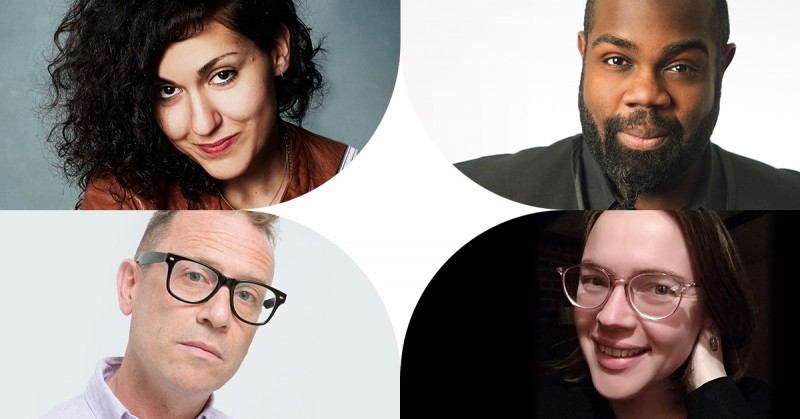What does it mean to push back against persecution, oppression, and injustice—and what role does music play as a catalyst for this resistance?
For many, the year 2020 served as a renewed clarion call to identify, address, and resist oppressive structures. But resistance—and music’s role as a tool in that resistance—is nothing new. From today’s Black Lives Matter anthems; to protest songs of the ‘60s and political music collectives of the ‘80s; all the way back to coded negro spirituals of the slavery era; music has always played a pivotal role in giving voice to the voiceless, and resisting the status quo.
On December 2, 2020, Tafelmusik presented Tafel Talks: Music as Resistance: a gathering of four musicians, to discuss the ways they view music as an act of resistance, both historically and in the present.
Moderated by musician, theatre performer, creator, and Ryerson University educator Raha Javanfar, this panel welcomed Torquil Campbell, member of the band Stars and co-host of Soft Revolution podcast; Kate Helsen, Assistant Professor, Don Wright Faculty of Music at the University of Western Ontario and member of Tafelmusik Chamber Choir, and Reginald Mobley, countertenor and programming consultant for Handel and Haydn Society; in a conversation on what music as resistance means to them.
What does “music as resistance” mean to four music experts of varied disciplines?
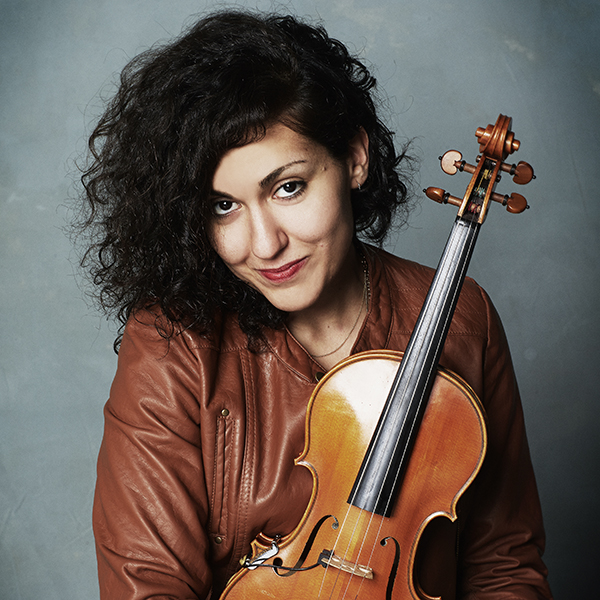
“[Music as Resistance] is a concept that has certainly existed for a lot longer than just the protest songs of the ‘60s, the songs I think a lot of us think of when we think of this topic. Throughout history, music has been a means of expressing resistance against the status quo: either covertly or openly. We find examples of music that pushes back against the oppression of the spirit, in everything from 17th-century convent music all the way to rap.”
“Music lends itself particularly well to expressing resistance. It's an effective and universal way that's understood by everyone. It can convey very complex emotions and difficult issues, and music can be memorized: it can be passed down through generations and can be internalized. And so when words alone fail, music can really do the heavy lifting.”
Javanfar related some difficult, but powerful examples of music acting as a form of resistance: in concentration camps, during the Holocaust.
“One very notable one comes from the darkest period of the 20th century: composers imprisoned in Nazi concentration camps, who secretly scribbled music on anything they could find. Bags, food wraps, mess tins, even toilet paper, in hopes that their music would be performed someday, even if they themselves did not survive composing music—an astonishing act of resistance. The music manuscripts have been catalogued, and the surviving ones are being performed today by Holocaust music scholar Francesco Lotoro who said “During the most tragic event in history, humanity set into motion the most civilized mechanisms of self preservation, and managed to spark an explosion of creativity. The composers created music regardless of their surroundings. Deprivation, loss of freedom and physical discomfort were not obstacles to their creativity. They were, in fact, a powerful incentive. Although it was not possible to save the lives of many musicians who were deported to the camps, we were able to save their music with every performance, and so we restore life and dignity to thousands of musicians.”
Javanfar also touched upon the ways music in Iran has given a voice to the voiceless.
“Where I'm from—the Islamic Republic—has very strict censorship laws that prohibit most popular music, and the Ministry of Culture and Islamic guidance has to approve, and license, anything that is distributed and released in the country. And so you can imagine that in a place that has such a rich culture, the underground music scene is just massive. There are raves that take place in the middle of the desert, and youth attend by the busload, and they go listen to music. And as a Westerner who's done my fair share of partying, I can't say that I have ever risked things like they do in order to be able to have that experience. We're talking about risks like major fines imprisonment flogging, and possibly worse. And so that's just one really small example of resistance through music and oppressed countries such as Iran.”
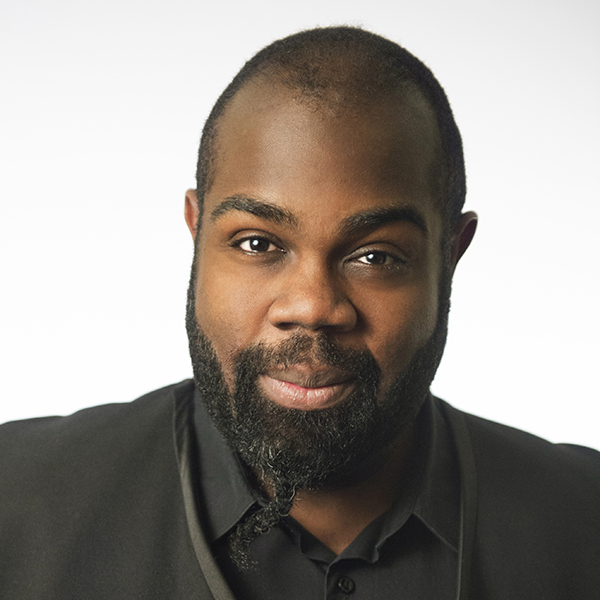
Negro spirituals acted as forms of self-preservation, and self-determination. Per Mobley, “We were taken from the homes we knew, the places we knew, the families that we knew and ripped apart. And we learned that you could take us from your homes, you could take us from our families, you could even take our lives and so much else—but what you can’t take is our voices. And music was a part of us. This was a way that we could stay connected.”
But these songs did not only function as narratives of pushing back against or conquering oppressors, but as coded messages: as literal tools of accessing freedom.
“And the thing about how that becomes resistance is there are sorrow songs, joyful songs, work songs—but there were also coded songs. There were coded spirituals. This is how they resisted.”
“What the slave owners didn’t know, is that when we sang “Steal Away” and “Follow the Drinkin’ Gourd” and “Wade in the Water”, this was a sign that we were about to escape. This was a sign that the Underground Railroadwas passing through. And everyone knew that this was our chance to escape and head north, to Boston, New York, and ultimately Toronto and Montreal: this was our chance for freedom. One of those powerful coded spirituals is “Steal Away to Jesus”. A lot of the words, the idea of “Steal Away”, is a trigger saying “hey, it’s time for us to go”. And it’s about to happen, it’s about to go down. And while the foremen and the slave masters are listening to this music, they don’t realize that we’re getting ready to go.”
In 2016, Mobley—along with arranger Patrick Dupré Quigley and the Seraphic Fire ensemble—composed and released their own version of “Steal Away”, for the album Steal Away: The African American Concert Spiritual.
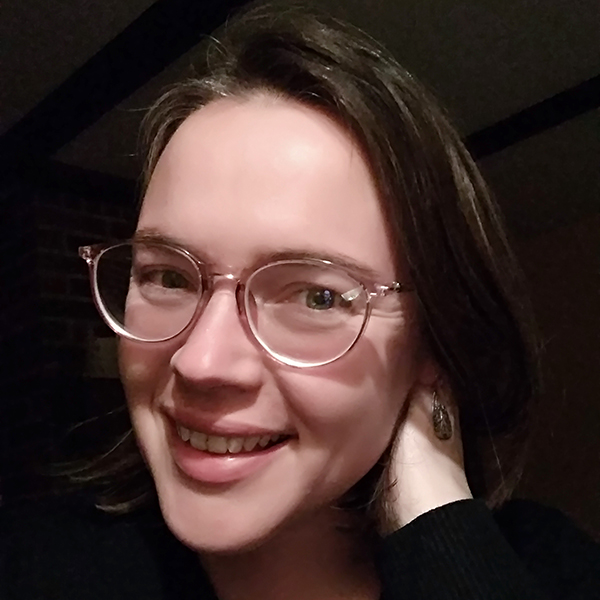
Vizzana published a sizeable collection of motets which would have been played in in the in the convent for masses and services—but, they also attracted a lot of attention from tourists. Vizzana and her convent were performing music which was quite contemporary for the time, so it became a trend for visitors to flock to Bologna and hear this cutting-edge music.
An episcopal auditor was dispatched to the convent, to shut them down: in the eyes of the church, there had reports of far too many tourists flocking to this convent. It was becoming a show, this was not okay.
Helsen shared a letter which details what happened when the auditor arrived—and the act of resistance staged by the nuns:
“The nuns immediately climbed up on the high and started throwing down tiles and stones from the top of the wall and roofs, forcing his retreat, and that of his squadron. And then as the bell sounded the alarm, the crowds flocked there, Vizzana—with crucifix in hand and her head veiled—made the convent's case so passionately that she moved the audience to pity and indignation. Not a few were weeping and many called out rebelliously, “Long live the nuns of Santa Christina”: that was their convent threatening insurrection. Meanwhile, children were gathering up lots of stones and tossing them into the convent through a small gateway, to ensure that the nuns would not run low on ammunition.”
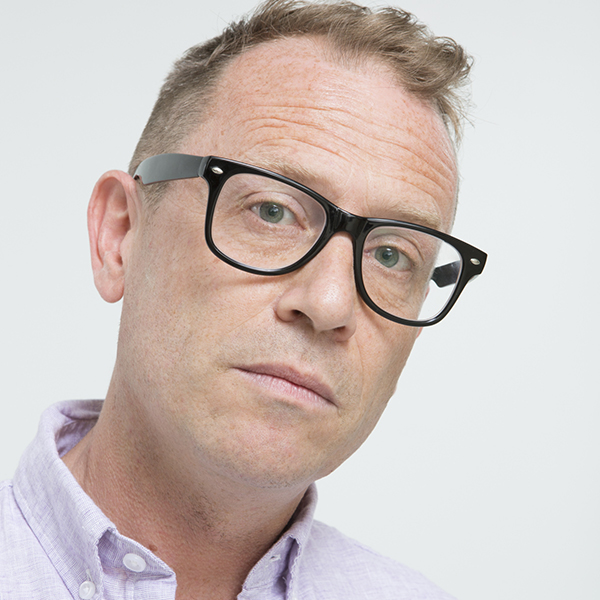
His role model and a major influence on his life, his father, taught him how one’s politics are inextricable from one’s identity as an artist. “I grew up in a family where my father was a pacifist: he was in prison, and a socialist, and a vegetarian—and these things were intertwined very deeply, in the fact that he was also an artist, an actor, and director, and opera director. Those things could not be separated: that to be an artist was to resist, and to be a resister was to embrace those that require your help.”
As a young man, Campbell was particularly influenced by the Red Wedge movement: a collective of musicians formed in the UK in 1985, who attempted to engage young people with politics, in the hope of ousting the Conservative government of Margaret Thatcher.
“When Red Wedge happened, and I was becoming obsessed with pop music…it was a unique thing, because first of all they attached themselves explicitly to the Labor Party. It was the first time that there’d been a tour put up where a bunch of bands got together, and toured to defeat a Prime Minister, and also toured to get the Labor Party elected. And as a 12 and 13 year old, I connected to it because I connected to the bands: I loved having this “club” doing these things that were subversive and directly trying to take down this government.”
“It wasn’t just that [Red Wedge] were on my side, it wasn’t just that they were talking about social justice, and unemployment, and rights for gay people, and things that had not been talked about in English politics before: it was also that they dressed the way I dressed, and looked the way I looked, and they were trying to get young people engaged with politics.”
Another key influence on Campbell’s development as an artist was the music—and the politics—of English singer-songwriter Billy Bragg.
“Billy Bragg has a real gift for combining the personal and the political: for writing love songs that are about politics, and political songs that are about love. And one of the biggest ones for me, that he wrote, is called “Waiting for the Great Leap Forwards”: it’s a brilliant song, and became more important for me over the years as I got into a band, and started to have this experience myself. Because the song begins with Bragg having finished a gig, and he’s talking to a journalist, and they’re sitting in the bar after the show. Bragg sings: ‘Mixing pop and politics, he asks me what the use is, I offer him embarrassment and my usual excuses’. There’s this kind of self-consciousness in pop music, about being explicitly political, that I reject. To me, to be in a band is a political act, to make pop music is a political act: it’s an act of refusal and resistance.”
“When I was a kid, the notion of art being sacrosanct, the notion [Reginald Mobley] was talking about—that you can take my job away, you can take my identity away—but music is an expression of my soul, and it’s not for sale. This was a massive part of what made Billy Bragg important.”
Campbell underscored and stressed that one does not have to be particularly virtuosic, or even talented, or even explicitly politically engaged, to make art and music that is political.
“By connecting politics to music, that's where I really found my sense of what I could be as a musician: which is someone who, frankly, is not very good at music, but who is very good at faith, and being in love with beauty…Anybody can make [pop music], you don’t even have to know how to play an instrument. What you have to have is a willingness to allow the possibility of beauty into your life. And that is what I have always centred my mission as an artist on.”
“To me, resistance is an act of surrender: it's saying “I don't have a weapon, I don’t have a sign, I may not even have a vote or a voice—but I have this object, or this melody, and that is beautiful. And my act of resistance is to be beautiful.”
Coming fully into the present, the panelists shared the ways the current pandemic has fostered resistance amongst musicians.
Mobley likened it to an extinction event, where creativity flourishes in surprising ways. “This pandemic is like a little mini ice age, which has stalled all the all the larger creatures out there: all the operas, and major orchestras have just had to shut down. But it was always the smaller creatures and little fleet mammals that found a way to thrive and survive during a massive ice age. And as a concert musician—as a recitalist and a chamber musician—all I need is my voice, and the lute, and another couple of players, and we have a concert.”
Along with the pandemic, 2020 brought with it a renewed attention to social justice, particularly acknowledging and calling attention to anti-Black racism in America and globally. Mobley spoke about how sharing stories of microaggressions—a term used for brief and commonplace daily verbal, behavioral or environmental indignities, whether intentional or unintentional—is a powerful way to shed a light on how racism is felt by performers and artists of colour.
“I was in this at this festival. And I was a soloist. I came in backstage and into my dressing room to get ready for the rehearsal in the morning. And this woman walks up to me and she says, “Good morning.” I said “Good morning, ma'am. How are you,” and she says, “Oh, I'm fine. It's great. Good to see you. Quick question: there is a rehearsal starting soon in the studio. Would you mind getting that opened up for us before we can get inside.”
“And, you know, of course I thought, ‘Oh, Right. She thinks I work here.’ And I said ‘yes ma'am. I'll be right there. Just go into the studio and I'll be I'll be there in just a moment.’ And she left the dressing room, and I stayed there until the rehearsal.”
“But it was later when that performance happened. And I was standing there, performing an aria, and I saw in the third or fourth row that very woman who had that encounter with me. And as I'm singing this piece…she was just enjoying and just taken by the music, and I thought that I could tell at that moment, that even though I had an encounter with this woman, I was a completely different person the person she talked to before. She encountered two different people.”
“And I realized that she had no idea what she said in that moment affected me. And so the next day, I went on Facebook, and asked every musician of colour of artists of colour: what are your stories about what has happened to you on stage, and off stage, in the workplace? Tell me what has happened to you. And I collected with permission all these stories and anecdotes and quotes, and created a text that kind of showed the heavy pain and emotional labor.”
This text resulted in Nigra Sum Sed Formosa – I am Black But Beautiful (a fantasia on microaggressions): a piece composed by Jonathan Woody, and performed by and based on Mobley’s text.
“That's the casual racism, the ‘death by 1000 microaggressions’ that are heaped on artists of colour, by unsuspecting people who mean well but don't realize what they're doing—because they don't care or think about what they're saying. They don't also take responsibility for the pain that they cause the people they say these things to.”
What can modern orchestras do, to combat white supremacy in our concert halls? Mobley highlighted how amplifying the voices of marginalized composers and artists is a start.
“With my role with the Handel and Haydn Society, we want to finally break down the walls that have been built around classical music, as it's become this gated community that has always been around, keeping safe these erroneous traditions and ways and expectations of “the way things are”.
“There have always been women composing…there have always been people of colour, writing this music in the classical sphere, doing the things that you do and expect, and it's time to start thinking about this: about not being so Eurocentric with the music that we all know and love.”
“The fact that the canon should no longer be the same dead white composers, but it should look like us: it should be who we are because that's what music is: music serves us, music exists to bring all of us together, it's what connects us as people. It's practical magic.”
What are current musical examples of music as resistance, and how can we keep the conversation going?
Javanfar highlighted some mandatory listening from Indigenous artists in Canada.
“There is this incredible number of indigenous artists in Canada, who have been creating music for so many years—and not enough of it has been heard for far too long, in my opinion. There's one band called Digging Roots who are one of my favorites, and they have a song called AK-47. The songwriter talks about loading up her AK-47 with love, and shooting it to all the people in places who need it more than bullets. So Digging Roots, Cris Dirksen, Jeremy Dutcher: there are so many phenomenal Indigenous musicians in Canada whose music is music for resistance, and certainly that's a lot of where my current listening attention and consumers dollars have been going.”
Campbell contributed with some other artists that are must-hears for today’s audiences.
“I have been listening a lot to a band called Sault, who are English and Los Angelino. You know, hip hop has been a source of resistance, and a place where I learned about Black history, and about Black peoples’ struggles as a white kid growing up in Toronto.”
“I feel like that aspect of rap music is still being represented brilliantly by people like Kendrick Lamar, but it's also… it's also that I think black music—which has always been ahead of every other form of popular music—has always been the thing that changed the next stage, has expanded [the form]. And when you listen to somebody like Dev Hynes who goes under the name Blood Orange, or you listen to this band Sault, or you listen to Beyoncé…people in America are finding [ways] to innovate musically and use it to resist. And that's been something that has happened for hundreds of years. It started as Mobley said with spirituals: but it's still going on.”
Campbell also spoke to the role of rap and hip hop as an educational catalyst, for people of all stripes.
“And so for me, as a ‘90s hip hop kid, I still look a lot to R&B music and to hip hop to give me the news, and to give me a perspective that I as a privileged white person don't have in my own personal experience…I learned about Black history by listening to hip hop, and I think that's just a really sort of plebeian workaday, but an incredibly important aspect of music is you can remember it.”
What does this mean for live performance? Campbell offered thoughts on what next steps might look like.
“The big question is not how do we diversify our stages—there's plenty of artists of colour who can come and occupy those places; there is no shortage of talent in the world. The question is, how do we make these spaces somewhere that people of colour, and people from marginalized communities, want to go: where they feel welcomed, where they feel like they are part of the deal. And I think that there are fundamental questions about what we wear, when we go out how, much the ticket costs. Sitting in rows are requirements; that people clap and not clap at certain times: these fundamental things, these rules, these little rules we've made up, that if you're not in the club you don't know the rule rules.”
Mobley offered practical steps to change our practices and policies.
One thing you can do is actually go to them: don't just have concerts…go to the neighborhoods where [marginalized communities] are, go where they are, go to the people: bring this music to them, bring this art to them. All we're asking for is to be seen. You don't just notice them. Also, there has been research on this: that where sporting events and arts events and entertainment events happen, the entire area does well financially. So when you take your concert to an underserved neighborhood, our Black neighborhood, or our Asian neighborhood, you bring all the dollars of your patrons with them: they go to dinner in that area, they pay for parking in that area. They go for a pack of gum in the bodega in that area. They bring those dollars to them and they enrich that area, and you and you become a part of that that neighborhood—and you become a part of that community. You really start to connect, and build that Gestalt idea of what a community is, and should be. It is it is greater than the sum of the parts. The whole of the community. And it’s the only way is to really reach out and become a part of it.”
Mobley also spoke to the power of diverse hiring.
“There is no shortage of incredible talent, [of people] of colour who are female or queer or whatever: hire them, break down these walls of meritocracy, and stop and stop saying, ‘well, this, this black kid isn't quite as good as Reggie’, or, ‘this young Iranian violinist is not as good as raw’. No. Hire that person, because we got to where we are because someone gave us a chance and we got the experience.”
“I think one of the biggest problems with white privilege, one of the things that I think is so insidious, is that white privilege allows someone to be mediocre, whether it's not held against them. No matter what they're given the benefit of the doubt. But if you are, it’s because you're a person of colour or Hispanic or Black, because you're a woman. You're held to a greater standard of someone else.”
Listen to a recap of all music referenced by, and chosen by, our participants in this Spotify playlist.
Image credits:
Raha Javanfar by Jen Squires • Reginald Mobley by Linder Pix • Torquil Campbell by Richard Lam

